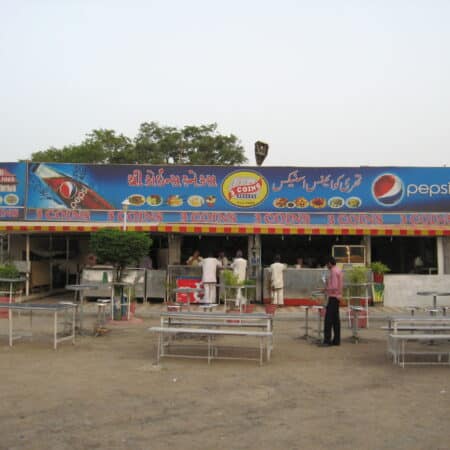
Pakistan Institute of Development Economics
- Home
Our Portals
MenuMenuMenuMenuMenuMenuMenu - ResearchMenuMenuMenuMenuMenuMenuMenu
- Discourse
- The PDR
- Our Researchers
- Academics
- Degree Verification
- Thesis Portal
- Our Portals

Is the Street Economy A Panacea for post-COVID Recovery?
On June 1st this year, Chinese Premier visited stalls of street vendors in Yantai City of Shandong provinces. He applauded the role of street vendors as an important source of jobs in China, while citing the example of Chengdu city that created 100,000 jobs with the issuance of 36,000 street vendors license. He mentioned that around 600 million Chinese, 43% of its population, are on average earning $140 per month. A broad-based growth requires catering to all population segments, where skill acquisition will always be uneven. And now with COVID-19 wreaking havoc on all economic indicators, desire for more participatory economy rises. High gear economy will be the primary driver for economic revival, but street economy is also vital to work as shock absorber at grassroots.
It was indeed a major shift in thinking about street vendors at the top level in Chinese government. For years, local governments in China discouraged and evicted street vendors in order to appear more modern and civilized. Unruly smell and sight of vending on streets went against the grain of modernity, but a reality check here. All these street vendors didn’t disappear in rapidly developing China. They remain low on the radar with a high pent-up demand and suppressed supply.
In a matter of days of premier’s statement, local governments in second tier cities reacted. They went into high drive to loosen up restrictions on their street economies. Stock market witnessed a rise in shares of producers of vending vehicles, equipment and outdoor umbrellas. Alibaba and its rival JD.com started extending microloans and other facilitation to street vendors. Even urban inspectors began calling street vendors to come and start business at designated vending zones.
It seems like COVID-19 pandemic is inducing new thinking among ruling elite around the world in reaching out to the poor segments of their polities. India’s Union Government has rolled out an INR 50 billion loan package for 5 million street vendors in June 2020. Till date, over 2.5 million street vendors have applied for the loan there. South African government relaxed the licensing regime for street vendors. Within few days, it issued thousands of street vending licenses throughout the country to safeguard the livelihood of vulnerable sections. Similar efforts are initiated across the globe for reducing the economic burden on low income populace. Even in Pakistan, the government made cash transfers to the tune of PKR 180 billion for poor in emergency aid through its Ehsaas programme.
However, bigger challenge remains the earning sustenance of the people at the lower rung of the economic ladder. It requires all-out thinking by policymakers in the country. Is it possible in our milieu to treat street vendors as the part of solution rather than just problem? Its mere sight may be irritating for the sensitivities of our upper and middle classes. Its presence goes against the grain of our dreams of transforming our cities in a sort of Dubai or Singapore.
However, reality of life remains that Pakistan is the fifth most populous country with a per capita income of around $1500. It cannot simply wish away its 39% population under multidimensional poverty. Elites may live in islands of prosperity, but majority of the population must negotiate accommodation in a multi-class living and livelihood environment.
Street economy, as in any other jurisdiction, is the outcome of ensuing struggle of the poor to find its earning mode in a brutal and unforgiving environment. It is a negotiated informal settlement between city authorities and have-nots on the usage rights of public space in urban Pakistan. And obviously, it has a cost attached to it in the shape of regular bribe payments, insecure tenure and fear of eviction. Informal arrangement has no sanctity of contract enforcement, but still offers a space in an existential struggle for poor.
Ratio of street vendors in countries like Pakistan, usually hovers between 1.5% to 2.5% of the urban population. In urban Pakistan, this population will range between 1.2 to 2 million, making up 5.5% – 9.1% of urban labor force. Revenues of this informal economic segment are estimated in hundreds of billion rupees, which also supports a significant bribery economy. It may not be the panacea for the economic recovery in post-COVID 19 period. But it could play a significant role in blunting the sharp edges of economic deprivation a la Chinese way.
Editor’s Note: An earlier version of this blog appeared in the Opinion Section of The Business Recorder on December 5, 2020.
Download full PDF


